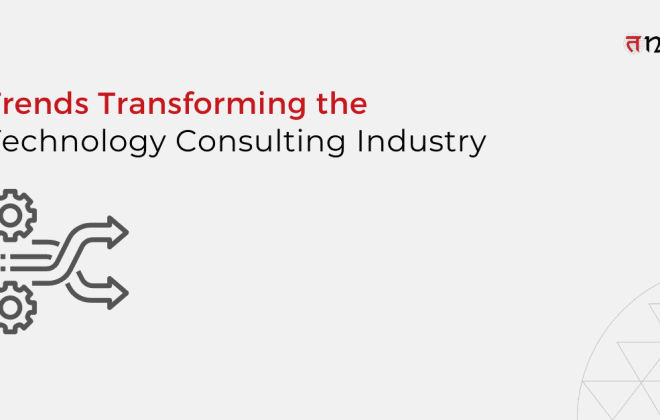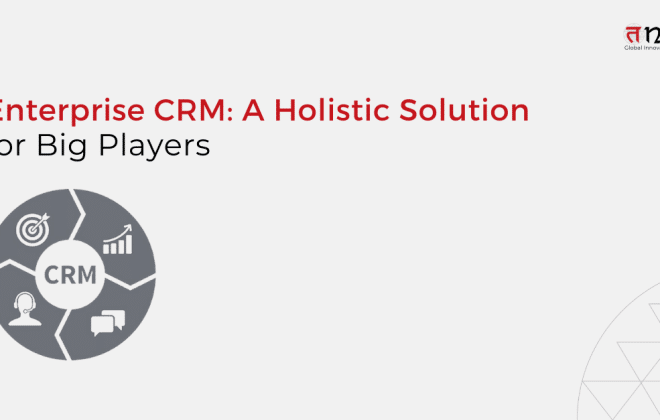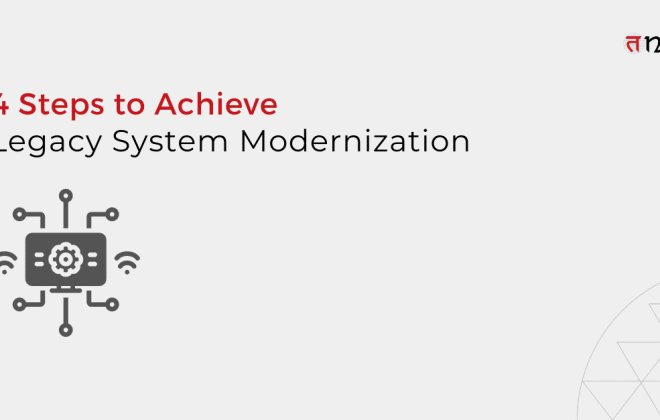
The Rugby of Coding: Top Software Development Methodologies
The blog looks at some of the top software development methodologies, such as Agile and Waterfall. Agile’s widespread adoption and proven benefits in improved software delivery and team efficiency showcase its success. While Waterfall remains relevant in specific industries, its rigid nature may not be ideal for projects with tight deadlines. DevOps is a popular and promising choice, emphasizing rapid development and customer value. Tntra’s unique methodologies further optimize software development processes, catering to diverse industries and ensuring successful project outcomes. Businesses can choose the right approach to streamline their processes and deliver exceptional products aligned with customer expectations.
British Telecom’s newly hired CIO acknowledged the problems brought on by their Waterfall approach in 2004. The system was burdened by high-priority overload, excess requirement generation, and haste to add many work items in each release. In addition, there were delays in the approval procedure and bottlenecks during the design phase. There was a lot of pressure on developers to fulfill deadlines, which left little time for quality assurance. The deployment phase was tumultuous, with certain releases or programs being dropped because they were late, weren’t profitable, or had too many bugs.
British Telecom undertook a big transition to Agile software development to meet these issues. They adopted shorter release cycles, emphasizing continuous delivery and user stories rather than thorough up-front documentation. They actively engaged the clients to simplify the approval process and guarantee alignment. British Telecom attempted to improve the overall quality and give enough time for seamlessly integrating increments by implementing smaller, more frequent iterations.
British Telecom saw impressive results two years after adopting Agile, and the company has no desire to return to the previous Waterfall methodology. After a three-day company-wide meeting with shareholders, the delivery cycle was shortened from 12 months to 90 days. Strict priorities were established, focusing on tales that add value to the business. The effectiveness of each cycle was measured against preset benchmarks, with potential team bonuses. Agile adoption significantly increased developer motivation and morale.
Source: Objectstyle
A Comparative Analysis: Software Development Methodologies for Success
It has been amazing to see how incremental development has replaced a strict, all-encompassing approach to software development. With 94% of businesses using it for 1–5 years and 33% using it for 3–5 years, the Agile approach has become widely accepted. The extent of agile adoption is so significant that only a mere 4% of companies remain unaware of these practices.
Historically, operational management concerns have made it difficult for CEOs and CTOs to strategize software development. However, the adoption of Agile has improved software delivery for 64% of businesses, increased team efficiency for 60% of businesses, increased delivery predictability for 51% of businesses, and improved software quality for 45% of businesses.

The Waterfall methodology is still used by many businesses in various industries in 2022. Traditional (Waterfall) approaches were used in 56% of projects over the 12 months in 2022, according to a PMI report, making them one of the professionals’ favorite project management methodologies.
The focus on in-depth planning at the beginning of a project distinguishes Waterfall from Agile approaches fundamentally. Agile, unlike Waterfall, does not strive for a comprehensive, meticulous strategy before launch. According to Ambysoft’s 2013 Project Success Rates Survey, Agile achieved a 64% success rate, while Waterfall stood at 49%.
DevOps is another popular development methodology. At a CAGR of 31.2%, DevOps is anticipated to reach $5.9 billion by 2023. In 2020, 99% of the firms claimed that after using DevOps, they saw a favorable impact. DevOps was cited by 61% of the organizations as having assisted them in the greatest methods to produce deliverables of a higher caliber in 2020.
According to statistics gathered by Google, 86% of organizations claim that they must swiftly develop and start producing new software, which is why they find value in DevOps. It’s important to remember that companies with the ability to offer digital goods to customers swiftly have an advantage over rivals. According to data gathered and studies by Google, 77% of businesses currently use DevOps to release software or plan to do so soon.
Top 3 Software Development Methodologies
Software development methodologies are crucial for creating software systems, and custom software development companies such as Tntra employ various methodologies in their daily operations. Each approach has advantages and disadvantages, aiming to facilitate seamless software development aligned with project requirements.
Let us look at some prominent software development methodologies –
- DevOps Development Methodology
- DevOps is the amalgamation of development (Dev) and information technology operations (Ops) throughout the production and deployment life cycle. It aims to achieve faster development, deployment, and feedback integration.
- Beyond being a development methodology, DevOps represents a set of practices fostering an organizational culture focused on enhanced collaboration among different development life cycle segments, including development, quality assurance, and operations.
- Pros –
- Through automation, DevOps aims to shorten time to market, lower release failure rates, and increase reliability.
- Businesses that use DevOps experience a shorter time to market, higher customer satisfaction, better product quality, and more productive employees.
- By heavily automating development and operations, collaboration is encouraged, and manual handling is reduced.
- DevSecOps improves security and continuous testing results in higher overall standards of quality.
- Cons –
- Some consumers don’t want to have their systems updated often.
- Before a project can enter the operations phase, several industries have regulations that call for thorough testing.
- Unidentified problems may creep into production if several departments employ various environments.
- The need for human involvement slows down the pipeline for delivering some quality attributes.
- Pros –
- Waterfall Development Methodology
- The waterfall method is often viewed as a formal and restrictive approach to software development. It adheres to a linear model with five successive phases (requirements, design, implementation, verification, and maintenance), each of which must be completed to the fullest extent possible before moving on to the next. The phases don’t cross over or loop, and there isn’t much room for adjustment or iteration.
- Pros –
- Extensive testing yields project phases that are well-maintained and organized.
- The progress of the team is facilitated by clear documentation and goal alignment.
- Projects with steady needs can be easily understood and managed due to their linear nature.
- Appropriate for project teams with less experience or those whose makeup changes frequently.
- Cons –
- Due to its traditional character, it has limited flexibility and little room for adjustment.
- It is best suited for projects with well-defined goals and little product changes.
- Due to its rigorous structure and stringent controls, it is slower and more expensive, which leads to the examination of other techniques.
- At this stage, there is a lack of client feedback integration into the development life cycle.
- Pros –
- The waterfall method is often viewed as a formal and restrictive approach to software development. It adheres to a linear model with five successive phases (requirements, design, implementation, verification, and maintenance), each of which must be completed to the fullest extent possible before moving on to the next. The phases don’t cross over or loop, and there isn’t much room for adjustment or iteration.
- Agile Software Development Methodology
- Teams employ Agile development to lower risks, including errors, cost overruns, and changing requirements. Agile involves mini-increments of additional functionality during iterative development.
- There are numerous variations of agile, including Scrum, Crystal, XP, and FDD. It promotes flexibility, cooperation, testing, and documentation to efficiently respond to client needs throughout the cycle. Instead of being linear, the process is iterative, emphasizing client orientation and desired features.
- Pros –
- Agile enables software releases in iterations, enhancing efficiency and early defect detection
- Users experience software benefits sooner with frequent incremental improvements
- Openness to modifications and discovery throughout the life cycle
- Results in a more efficient end product compared to other development lifecycles
- Cons –
- Agile requires frequent time commitments and labor-intensive development for feature acceptance within iterations.
- Agile relies on real-time communication and lacks adequate documentation for new users.
- The amount of documentation during development may be insufficient due to frequent project modifications.
- Pros –
A lengthy process and lengthier time frame might not be appropriate for projects with strict deadlines. Delays may occur when teams execute inconsistently.
The Unique Tntra Methodology
Tntra’s seasoned leadership has created distinctive and trademarked approaches for each, whether in FinTech, Healthcare, supply chain, the New Economy, or elsewhere.
Tntra’s leadership has crafted methodologies to enable businesses to harness digital technologies advantages. These approaches facilitate creating, deploying, and operating powerful products for various enterprises. Moreover, they enhance team organization, reducing inefficiencies in the development process.
Tntra Software Methodologies is a set of proven frameworks and practices that guide the development of user-centric software products and solutions.
Check out our methodologies page to learn more about Tntra’s unique methodology.
Conclusion
Software development methodologies play a vital role in shaping successful projects for businesses across various domains. The Agile, Waterfall, and DevOps methodologies have their strengths and weaknesses, catering to specific project needs.
Tntra’s innovative and patented methodologies add value, enabling enterprises to leverage digital technologies effectively and efficiently. Adopting the right methodology allows businesses to streamline their development processes, improve collaboration, and deliver exceptional software products that meet customer expectations.
Contact our experts today to learn more about our leading software development methodology.





